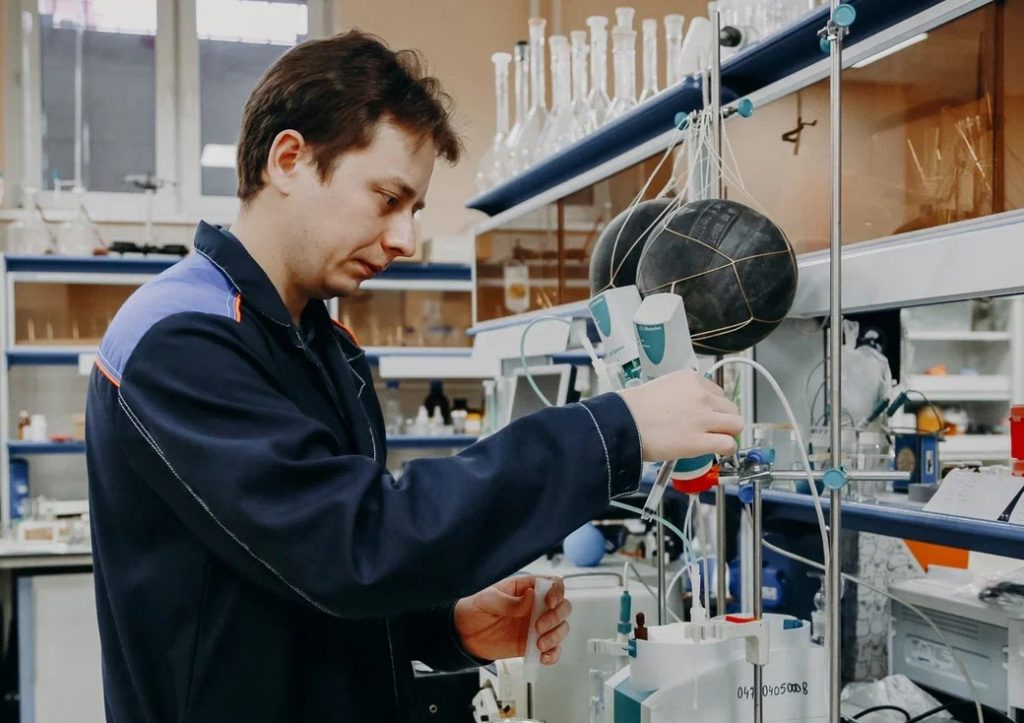Graduation thesis offers new development for luminescent thermometry

Maxim Zhernakov, a 2024 graduate of the Institute of Chemistry, made a scientific discovery while writing his graduation thesis: he proposed a solution to the problem of contactless temperature measurement in cryogenic and normal conditions by developing materials for luminescent thermometry.
“The basis for solving an important scientific problem was the material on stable ytterbium(III) complexes with aromatic N-donors developed by our laboratory staff and colleagues. Using pairs of lanthanides: terbium(III) – europium(III), dysprosium(III) – europium(III), and terbium(III) – samarium(III), compounds were obtained that are not inferior in stability to the parent ytterbium complex and have temperature-dependent luminescent properties,” explains Maxim’s scientific supervisor, Head of the Laboratory of Coordination Compounds, Associate Professor of the Department of Inorganic Chemistry Valery Shtyrlin.
Six new compounds based on rare earth metals are distinguished by the fact that when the ambient temperature changes, their emission spectrum and, accordingly, the color of this emission change. Temperature-dependent luminescent properties of the compounds formed the basis for the creation of a new type of thermometer.
“The selection of conditions, targeted synthesis, purification, thermal analysis and structural analysis for compliance with the parent structure were carried out by representatives of the Chemical Institute of KFU and the School of Natural Sciences of Tyumen State University, and further study of the optical properties of the obtained materials was carried out at the Justus Liebig University of Giessen in Germany. The studies made it possible to describe for the first time the energy transfer from the dysprosium (III) ion to the europium (III) ion in a solid-state coordination compound and determine their most important parameters for creating luminescent thermometers,” says Shtyrlin.
The scientist specified: it was found that the values of relative thermal sensitivity are in the same range as for known leading compounds, covering a temperature range from -10 to +65 degrees Celsius, while their thermal stability exceeds the corresponding indicators of thermometers based on metal-organic frameworks and polymer composites, which makes the synthesized materials related to inorganic ones.
Next, the project participants plan to conduct cyclic measurements in various environments to test the obtained materials for suitability in model and real systems. The results of the study are presented in an article published in Chemistry of Materials.
The scientists plan to develop various sensors, test systems and devices for measuring temperature in everyday life, in production and in reactors of various types based on the obtained compounds.

